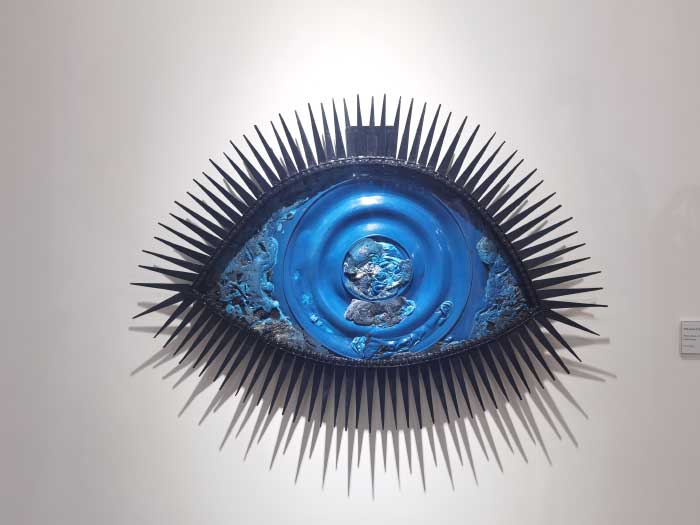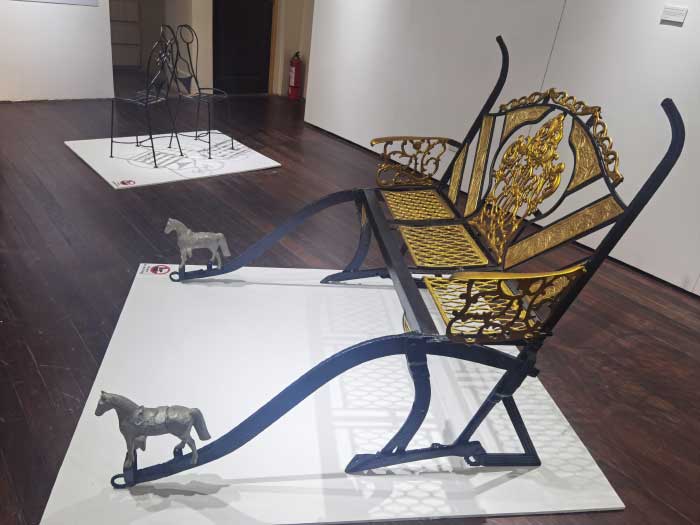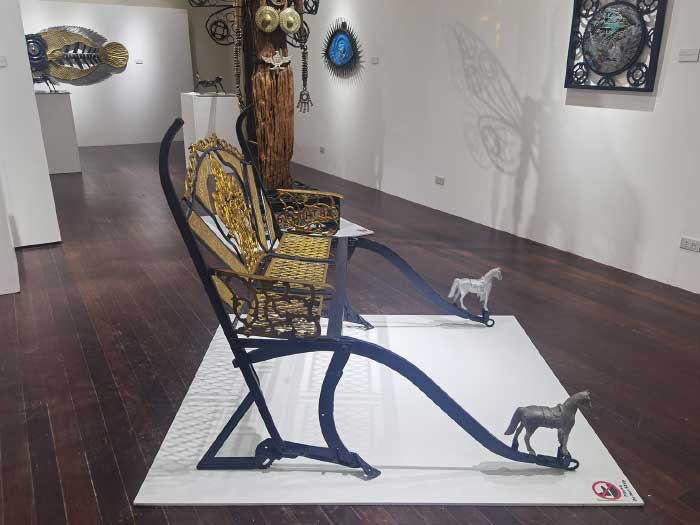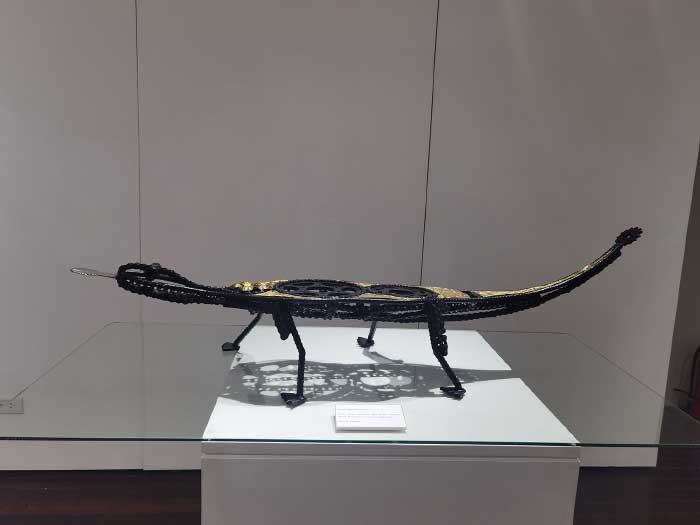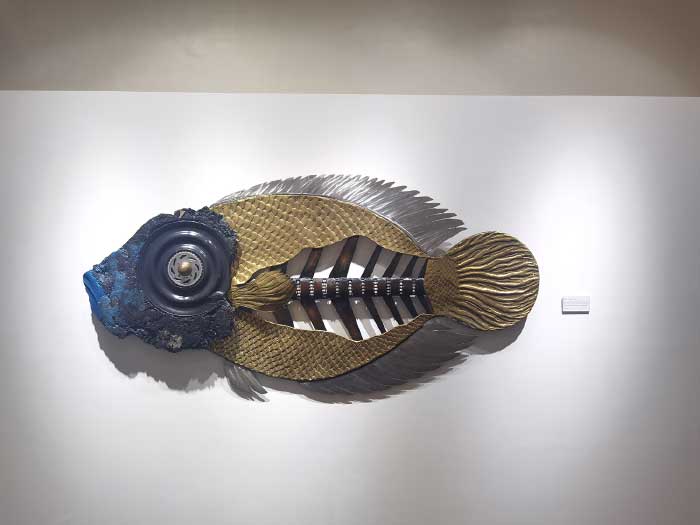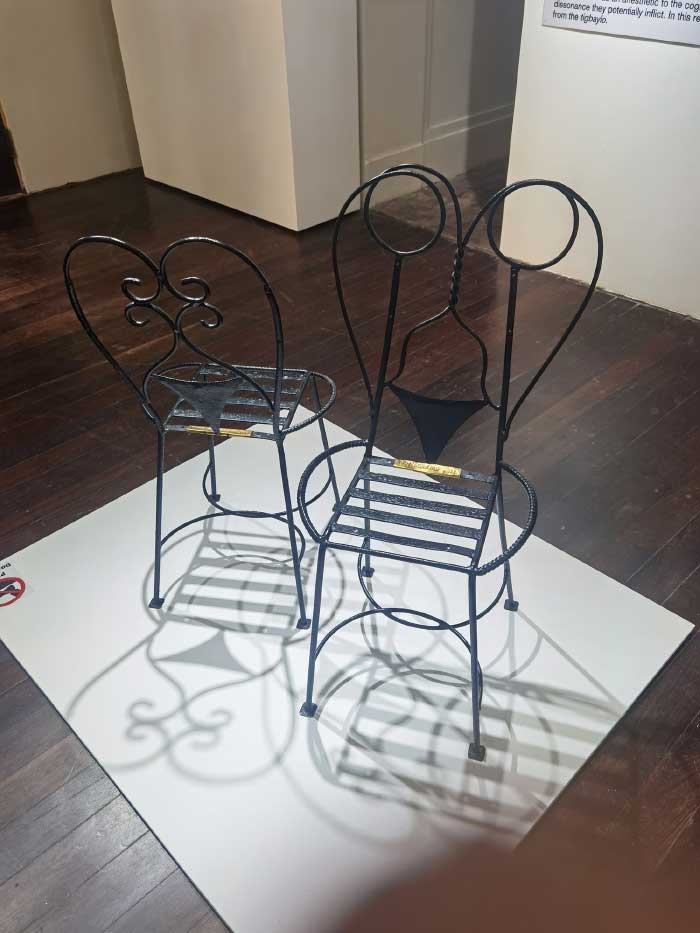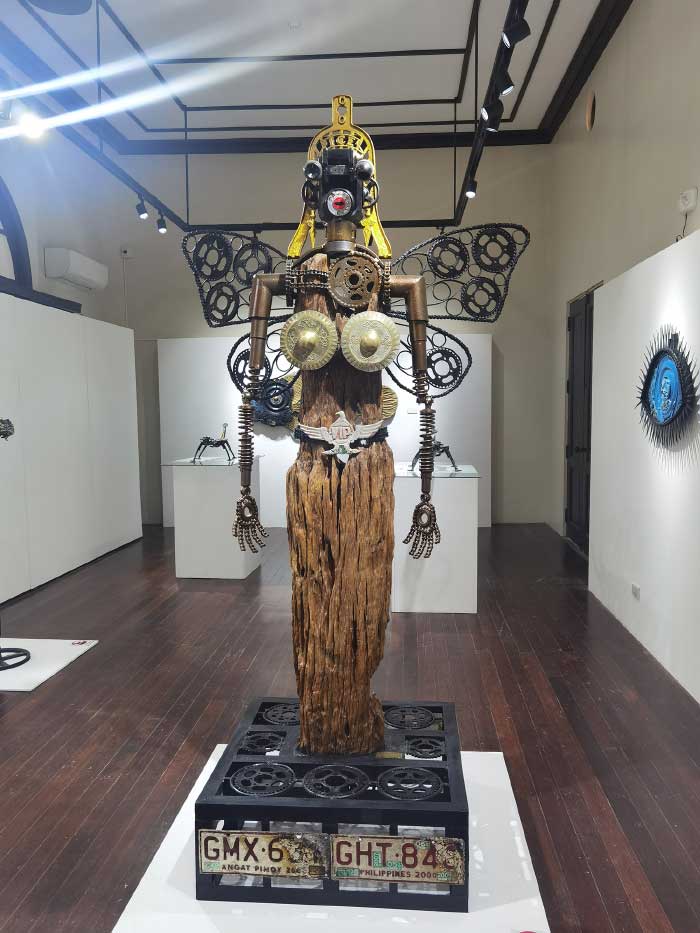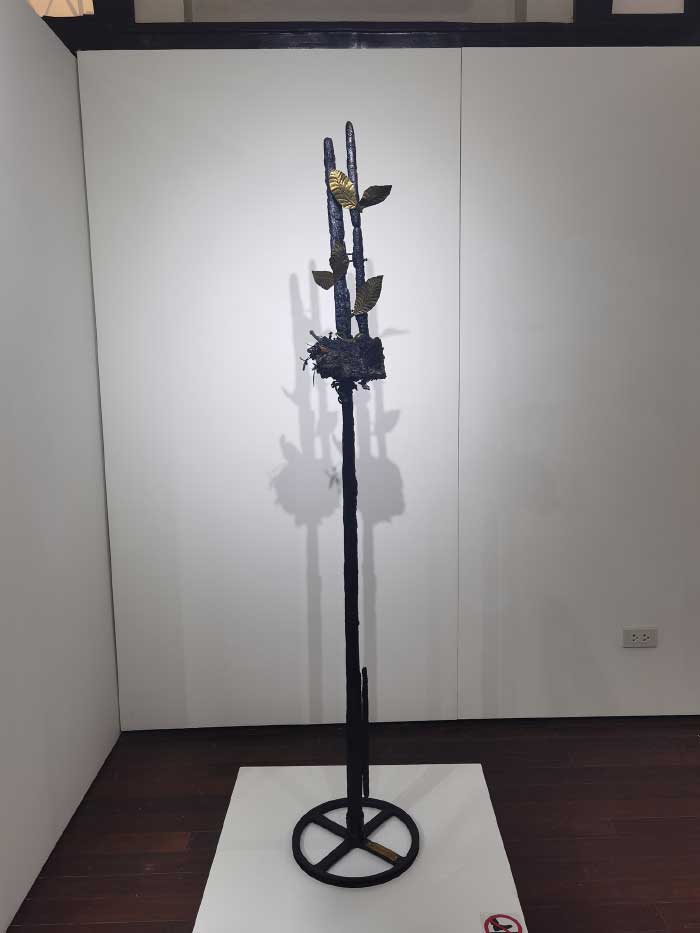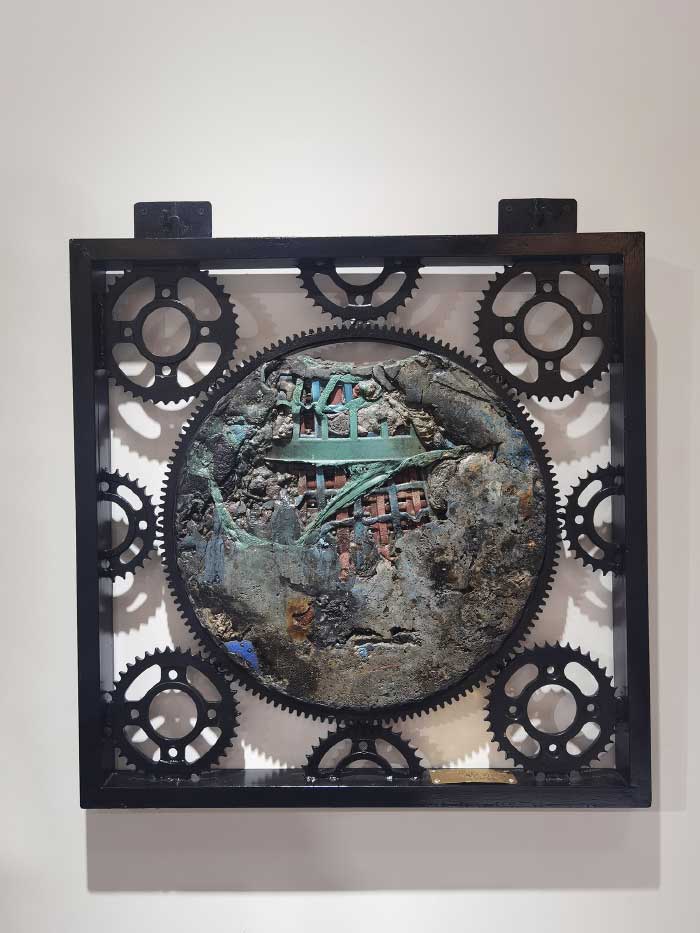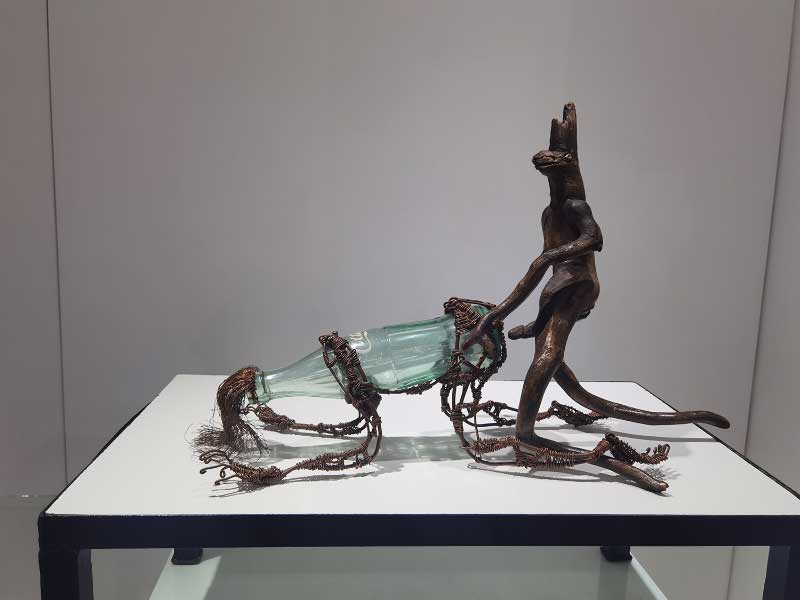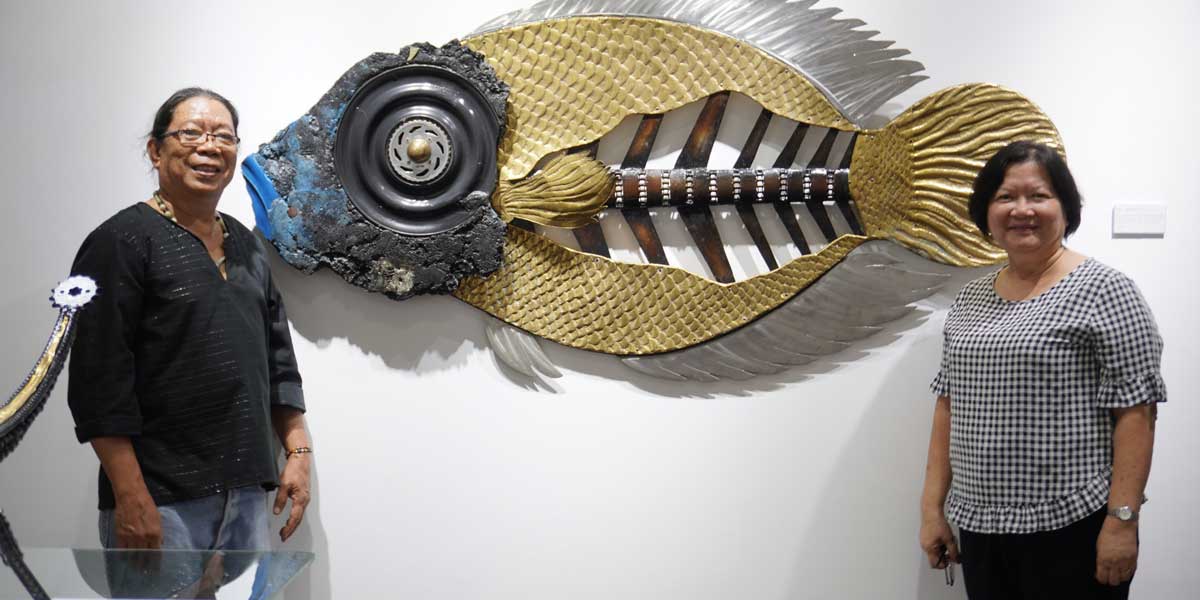By Martin Genodepa
In Western Visayan folklore the tigbaylo, also known in some areas as binaliw, refers to a creature that may look like an ordinary human being but in truth is an aswang – a woman or man who feeds on other human beings.
Tigbaylo or binaliw stems from the root word baylo, meaning to change or exchange.
Art is, in a sense, a tigbaylo or binaliw because materials or mediums, in the hands of the artist, are turned into new forms and expressions that are disparate from their original states.
The art of turning refuse into pleasing forms is not exactly new. But upcycling has become a trend for artists who are also staunch environmentalists.
Gregorio “Boy” Masculino’s (b 1960) art has always been about reusing natural and industrial discards since the 1980s as a member of the Pugaran group.
The materials (wood, metal scraps, and detritus) used in his very first solo exhibition, Tigbaylo: Reimagining Refuse, were gathered by the artist for over a decade.
Isda – 6,000/Kilo, Padayon ang Kabuhi, The Blue Eye, and Re-Building incorporated debris from the public market of Oton town that was gutted by fire in 2022. The works not only attest to Masculino’s creativity but they are subtle reassertions of hope and the idea of an afterlife. By mixing the discards with found objects and construction materials like steel and brass, these artworks may fittingly be classified as re-constructions – when the incomplete is given fullness, the reject is given a new life, and the useless is turned into a thing of beauty.
An architect by training, Masculino’s familiarity with the nature of raw materials and his skill at construction yields bizarre pieces of sculpture that do not stray from the initial conceptual moorings that have guided his art practice all these years.
With his background in architecture, function and functionality have also informed Masculino’s art, his sculpture especially. Bulawanon nga Pulongkuan is a bench fashioned from metal plows, sewing machine pedals, parts of garden chairs and adorned with horses from Sarao jeepneys. Jose kag Maria are chairs that upcycled broken café chairs. Halo Pagata 1 and 2 are coconut graters disguised as monitor lizards. As pieces of furniture or equipment, Masculino’s sculptures take on tiers of denotative and connotative meanings as the materials undergo the process of transformation without totally losing their primary form. The works compel the viewer to turn philosophical – giving up or losing one’s original purpose to serve a larger purpose or a grander plan does not necessarily make one lose one’s unique, principal or basic design altogether.
Masculino’s pieces of sculpture are socio-political commentaries that are at times subtle, at times witty, and still, at other times disquieting if not altogether appalling. The aesthetic experience they provide serves as an anesthetic to the cognitive discomfort they potentially inflict. In that regard, they are no different from the tigbaylo.
Magdalena 24/7 on Call is an assembly of driftwood, WW II vintage telephone, old car plates and ice crusher among others. The name Magdalena references Mary Magdalene. In the Philippines, it is popularly euphemism for female prostitutes. The use of car plates is reminiscent of pick-up girls or street walkers who wait for customers riding in cars. Since the car plates include those used for government vehicles, Masculino may be reiterating the obvious – everyone is responsible for Magdalena’s plight, including the government. The sculpture which mainly depicts the figure of a woman that is, at once, graceful and scrawny and non-human alludes to the dehumanizing consequence of this social ill.
Sexy and the Beast assaults a viewer’s sense of decency by showing a tikbalang-like figure crafted from driftwood copulating with a woman made of vintage Coca Cola bottle and fitted with hair and limbs using copper wires. The shape of the said soft drink bottle was once thought of as the ideal body shape for women. But multinational companies especially like Coca Cola have also been blamed by nationalists and activists as one of the reasons for the country’s economic woes. This is obvious in the case of the iconic painting Itak sa Puso ni Mang Juan done by top Filipino social realist, Antipas Delotavo, who is also an Ilonggo. In Delotavo’s painting Coca Cola’s bolo-like lettering points and threatens to pierce the heart of the Filipino everyman. Masculino’s work, in contrast, is a denouncement of the soft drink company.
Despite having done art for more than 30 years, Boy Masculino’s solo exhibition may have come rather late. (He has been busy with community work and with helping emerging artists develop their talents. In fact, many new and young artists have done more solo exhibits than him.) However, the years have only succeeded to make Masculino’s art complex. The thoughtful and inventive use of detritus made his works poignant, highly nuanced, and sharp all at the same time.
Tigbaylo: Reimagining Refuse was put on at Lantip Changing Exhibition Gallery 1 of the UP Visayas Museum of Art and Cultural Heritage (UPV MACH) as part of the university’s National Arts Month celebrations.


















